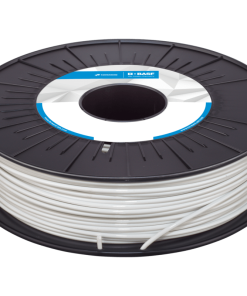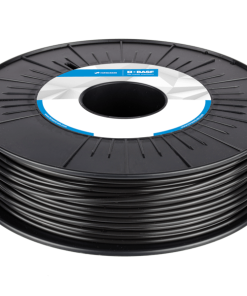XStrand™ GF30-PP Filament – Black 1.75mm (2.2kg) M. Holland
$ 363,00 $ 108,90

GF-30 PP:
Features and Benefits:
– Materials designed for functional prototyping and industrial applications
– Engineered reinforced plastics
– Very stiff and strong
– Large operational temperature range: -20 ˚C to 120 ˚C
– Good chemical and UV resistance
– Excellent layer adhesion and reduced warping effect compare to neat materials
Printing Recommendations:
– XSTRAND™ filaments are designed to be compatible with most of open fused filament fabrication 3D printers available on the market.
– Hardened steel nozzle is highly recommended to print XSTRAND™. When melted, XSTRAND™ filament can be abrasive due to its glass reinforcement. Using hardened steel nozzles and extruder driving wheels is advised. Using hardened steel nozzles and extruder driving wheels is advised. Hardened steel nozzles can be found at
https:///collections/duraplat-3d-extruder-nozzles
or
https:///e3dv6-hercules-a2-hardened-steel-nozzle/
For Tips & Tricks on how to print Xstrand GF30-PP 1.75MM on the Zortrax M200 Plus, Zortrax M300 Plus and Zortrax M300 Dual 
Bed components are recommended as follows:
– If printing on a glass bed use one of the following:
~Use reinforced strapping packaging tape on the bed (e.g. Scotch Extreme Tape), with bed temperature around 30-50˚C
or Use Wolfbite Ultra for polypropylene from Airwolf
~A high-density polyethylene (HDPE) plate as printing surface, instead of glass plate for example, is highly recommended. – Bed temperature at 30-50˚C. It’s better if the HDPE bed is thicker (thickness of 1/4’’ to 3/8’’). First layer width of 130% and height of 75% are recommended too.
~Or use a perforated bed (such as the one on Zortrax machines). For Zortrax machines, use default ABS setting.
~For large flat surface, a raft is required to reduce warping. 5-8mm raft offset and airgap 0.16 – 0.18 are recommended.
– Nozzle temperature: 220 – 280 ̊C
– Bed temperature: 80-110 ̊C
– Nozzle diameter: >0.4mm
Case studies:
Rossignol: https:///watch?v=3FsfPWo7Ngw
Seair: https://youtu.be/Pg-7HgO7ZfQ
About Owens Corning:
– A world leader in glass fiber composite
– More than 500 researchers in five R&D centers
– $5.7 billion sales (2016)
– 17,000 employees in 33 countries
 |
 |
 |
|

Professional packing and fast shipping
Due to our longstanding partnership with UPS FedEx DHL and other major global carriers, we are able provide a range of shipping options. Our warehouse staff is highly trained to package your goods exactly as per the specifications we offer. Before shipping the goods are carefully inspected and secured. Everyday we deliver thousands of packages to customers from all over the world. This is a testament to our commitment to be the largest online retailer worldwide. The warehouses and centers for distribution are situated in Europe and the USA.
Orders with more than one item are given processing time for each item.
Before shipping, we will conduct a thorough inspection of the items you've ordered. Currently, most orders are shipped within 48-hours. Expected delivery time is between 3 and 7 days.
Returns
The stock is dynamic and we do not fully manage it because of the fact that multiple stakeholders are involved, including our factory and warehouse. The actual levels of stock can change at any moment. It's possible that the stock may run out after your order has been placed.
The policy is 30 days. If you haven't received the product within 30 days, we are not able to issue a refund or an exchange.
For your item to be returned, it must be unopened and in the same state as you received it in. It must also be in the original packaging.
Related products
3D Printer
3D Printer
3D Printer
3D Printer
3D Printer
3D Printer
















































